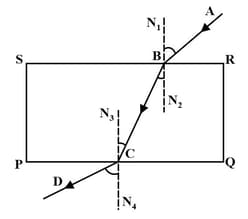The refraction happening in a glass slab and prism are the same.
Important Questions on Light
Between the angle of incidence and angle of refraction, which one is greater when light travels from a rarer to a denser medium?
When a ray of light is incident perpendicularly on a transparent glass slab, what will be its angle of deviation?
How many rectangular surfaces are there in a prism?
Beams of light are incident through the holes A and B and emerge out of box through the holes C and D respectively as shown in figure. Which of the following could be inside the box?
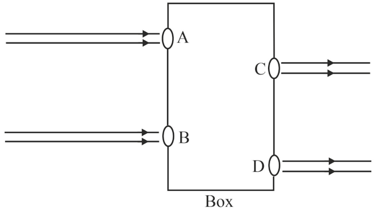
The path of a ray of light coming from air passing through a rectangular slab traced by four students are shown by figures P, Q, R and S. Which one of them is correct?
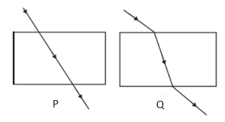
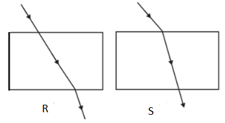
A student performs the experiment on tracing the path of ray of light passing through a rectangular glass slab for different angles of incidence. He measures the angle of incidence , angle refraction and angle of emergence for all his observations. He would find that in all cases.
Light travelling along a normal is _____ (completely/ partially/ not) refracted.
Two surfaces of a prism are transparent and are known as the_____surfaces.
In visible light, _____ colour is deviated the most in a prism.
In the following diagram the correctly marked angles are :
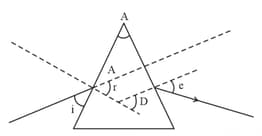
A student very cautiously traces the path of a ray through a glass slab for different values of the angle of incidence (). He then measures the corresponding values of the angle of refraction () and the angle of emergence () for every value of the angle of incidence. On analysing these measurements of angles, his conclusion would be:
In an experiment to trace the path of ray through a glass slab, Shiva traced as shown in the figure. Out of AB, BC and CD, _____ is the emergent ray.


